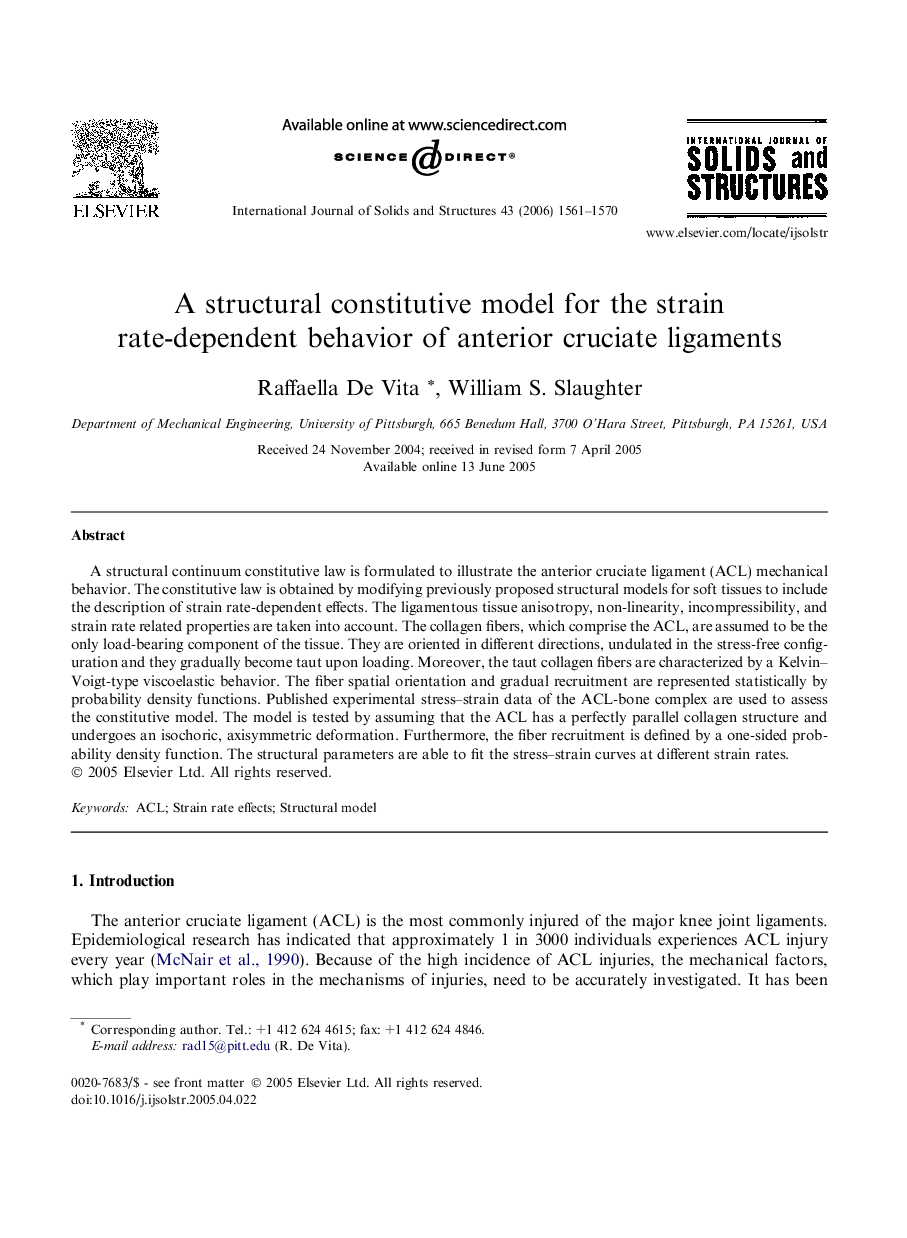| Article ID | Journal | Published Year | Pages | File Type |
|---|---|---|---|---|
| 280927 | International Journal of Solids and Structures | 2006 | 10 Pages |
A structural continuum constitutive law is formulated to illustrate the anterior cruciate ligament (ACL) mechanical behavior. The constitutive law is obtained by modifying previously proposed structural models for soft tissues to include the description of strain rate-dependent effects. The ligamentous tissue anisotropy, non-linearity, incompressibility, and strain rate related properties are taken into account. The collagen fibers, which comprise the ACL, are assumed to be the only load-bearing component of the tissue. They are oriented in different directions, undulated in the stress-free configuration and they gradually become taut upon loading. Moreover, the taut collagen fibers are characterized by a Kelvin–Voigt-type viscoelastic behavior. The fiber spatial orientation and gradual recruitment are represented statistically by probability density functions. Published experimental stress–strain data of the ACL-bone complex are used to assess the constitutive model. The model is tested by assuming that the ACL has a perfectly parallel collagen structure and undergoes an isochoric, axisymmetric deformation. Furthermore, the fiber recruitment is defined by a one-sided probability density function. The structural parameters are able to fit the stress–strain curves at different strain rates.
